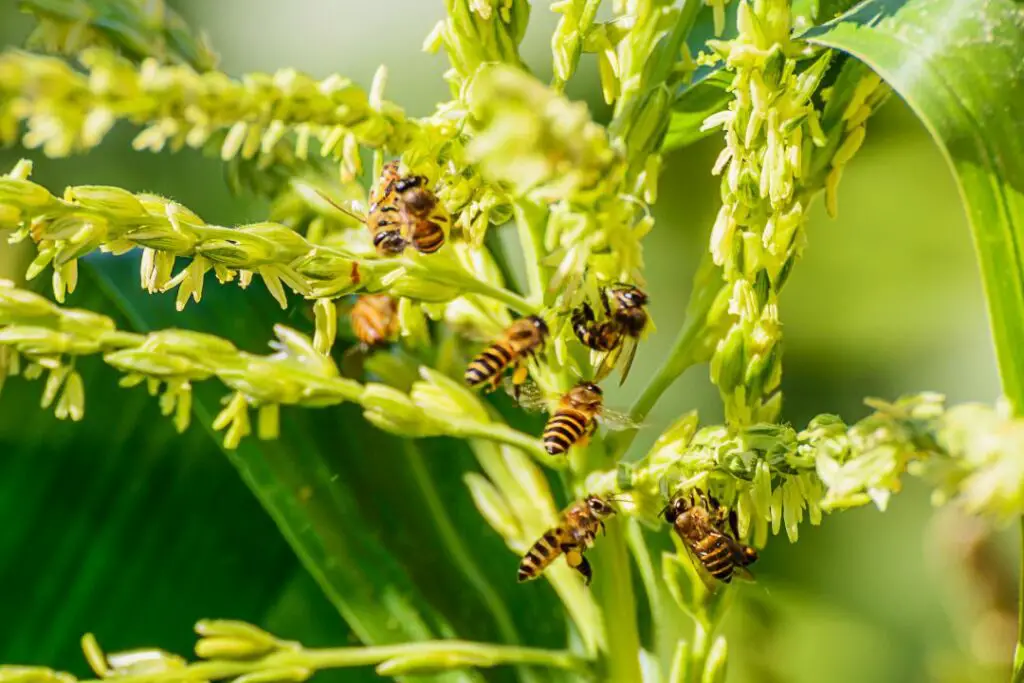Honey bees are vital players in the tapestry of life that sustains us all.
These buzzing insects are champions of pollination, helping plants to reproduce and produce the fruits and vegetables we eat every day.
But within the bustling world of the bee hive, a complex society thrives, each bee born into a role that serves the colony’s greater good.
The worker bee is the backbone, the unsung hero of the hive, tireless in their dedication to the queen and colony.
The Honey Bee Hierarchy
A bee colony is a marvel of natural precision, each member playing a specific part in a well-oiled machine.
At the heart is the queen, the only fully fertile female tasked to lay thousands of eggs, ensuring the colony’s future.
Then there are drone bees. Males, whose sole mission is to mate with a queen. They live for this single, vital act before perishing.
But most of the hive’s population comprises our focus for the day, the worker bee.
Worker bees
All females, but not fertile like the queen. These are the labour force of the hive.
They’re responsible for everything from feeding the larvae (the hive’s future) to foraging for nectar and pollen, turning them into honey and bee bread.
Worker bees start their lives as nursemaids, caring for the brood.
As they age, their roles transition through a series of tasks: they become builders, producing wax to construct the honeycomb; guards, defending the hive’s entrance; and finally, foragers.
Each worker bee’s life is a testament to selfless service, tirelessly contributing to the colony’s success.
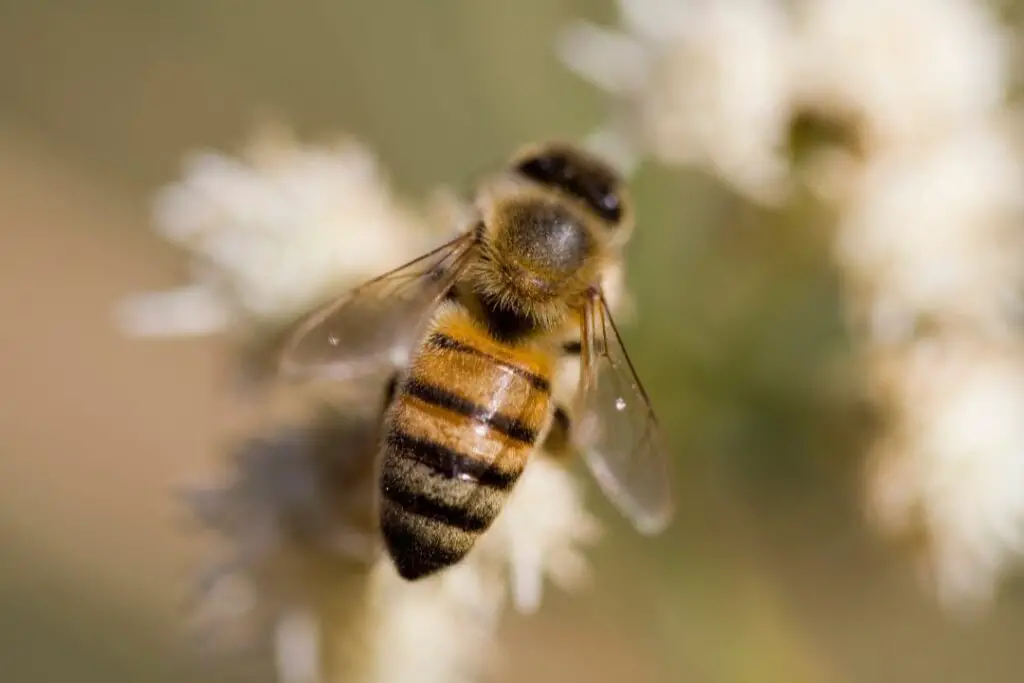
The hive mind
Now, you might be wondering how all these bees know which roles to take and what to do each day.
It all comes down to the queen. Queen mandibular pheromone, or QMP, is a unique chemical released by the queen’s glands.
It essentially bonds her to her subjects.
Nurse bees won’t raise other queens. It even stops the other honey bee workers from growing ovaries and a reproductive system, ensuring the queen is the only fertile female.
The Lifecycle of A Worker Bee
Now we know where workers fit in, let’s go from comb to flower and follow our worker bee as it grows into adulthood.
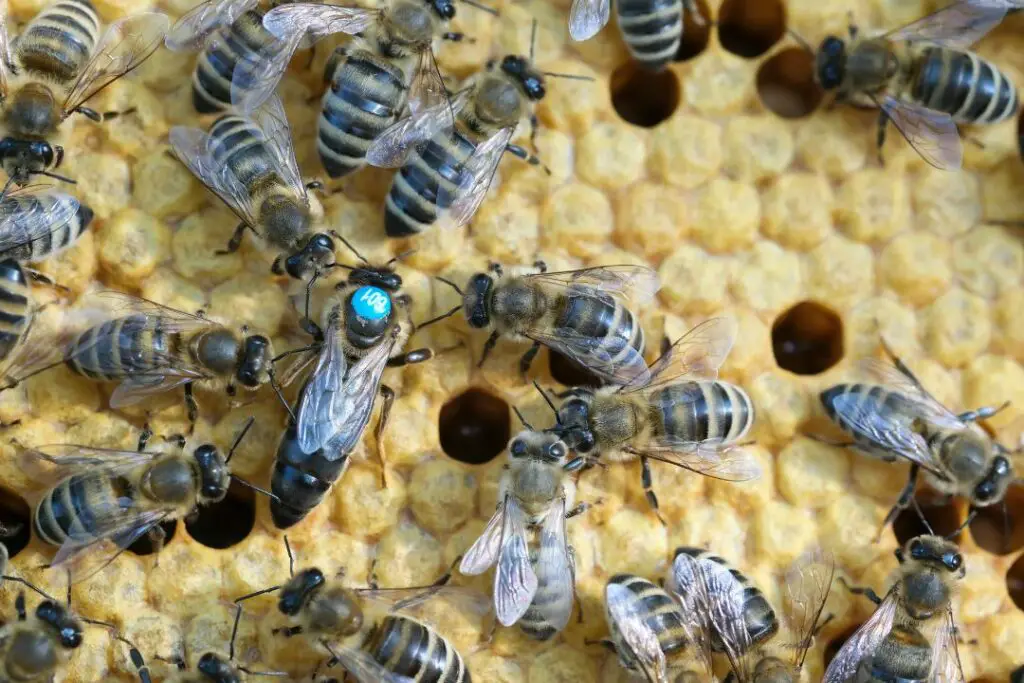
The Egg Stage
Day 1-3
The journey begins in the heart of the honeycomb. The queen lays a tiny, elongated egg in a wax cell.
These eggs are the future workforce destined to keep the hive thriving.
The Larval Stage
Day 4-9
Three days later, the egg hatches into a legless, blind larva. Nurse bees feed it royal jelly at first, then a mixture of pollen and honey.
This is the growth spurt stage, where the larva sheds its skin multiple times as it expands to fill its cell.
The Pupal Stage
Day 10-23
The larva spins a cocoon around itself, entering the pupal stage.
The colour of the bee darkens as it matures. What was once a grub-like creature metamorphoses into a bee, developing legs, wings, and eyes.
The Adult Stage
Day 24
Finally, the adult worker bee chews through the wax cap of her cell and emerges, ready to take on her role in the hive.
She’s a full-fledged colony member, prepared to work until her last breath.
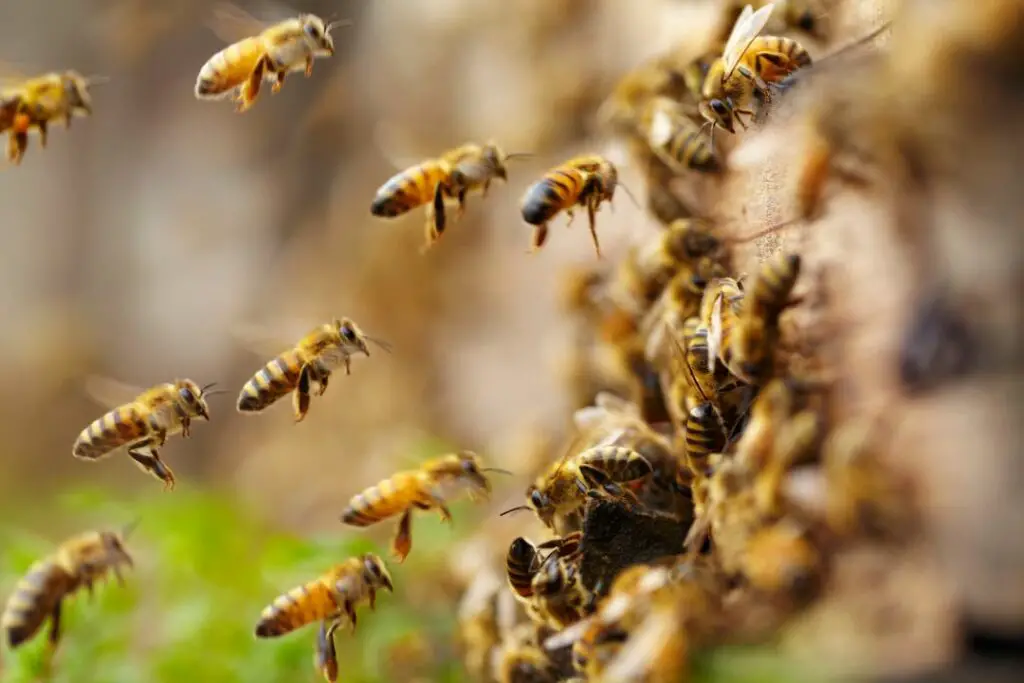
Roles & Life Span
These guys don’t stay in the job long, and after they emerge, they quickly join a carefully structured career path based on how old they are.
Here’s what you can expect with a handy timeline.
| Age (Days) | Role | Duties |
|---|---|---|
| 1-2 | Nurse Bee | Feed larvae and care for the queen. |
| 3-5 | House Bee | Clean the hive and circulate air with wings. |
| 6-11 | Builder | Produce wax and construct honeycomb. |
| 12-17 | Guard Bee | Protect the hive entrance. |
| 18+ | Forager | Collect pollen and nectar. |
*Interesting fact – When all is said and done, these guys can expect to have a lifespan of around six weeks max.
Nurse Bee
Days 1-10
Their primary duty is to feed and care for the larvae in the brood cells.
They produce royal jelly from their glands to feed the larvae, ensuring the young bees are well-nourished to grow healthy and strong.
They’re also queen attendants, grooming and feeding her as she lays the eggs to become the next generation of workers.
Housekeeper
Days 10-16
The transition to housekeepers marks the worker bees’ first interaction with the maintenance of the hive.
They keep things clean and tidy, removing debris and dead bees.
This prevents disease and maintains a good home for the rest of the bees.
Builder
Days 12-35
Builders secrete beeswax from their abdominal glands and mould it into the hexagonal comb structures we know.
These combs serve as storage for honey and pollen and as a nursery for the newly laid eggs.
The precision with which they build is a testament to the bees’ innate architectural skills.
Guard
Days 18-21
Guard bees stand as sentinels, protecting the hive from predators and other threats.
They use their keen sense of smell to identify intruders and are equipped with stingers to defend their homes.
Guarding the hive is critical for the colony’s protection and safeguarding of its precious resources.
*Bee Predators – Find out why bees need their stings in our list of animals that hunt and eat bees.
Forager
Days 22 until end of life
Foragers are the adventurers of the bee world, leaving the hive to collect pollen, nectar, water, and propolis.
They have a vital role in pollination, helping plants to reproduce while gathering food.
Their hard work ensures not only the survival of their colony but all other life and agriculture around them.
Fanning bees and water collectors
These roles are less time-specific and more temperature-specific.
In the height of summer, hives and nests get so hot that the worker bees within need to take action.
It’s essential to cool the hive, and this bee species has developed a rather ingenious technique.
Some bees will leave to collect water and return to the hive. Once water has arrived, worker bees fan the hive, evaporating the water and cooling the interior temperature.
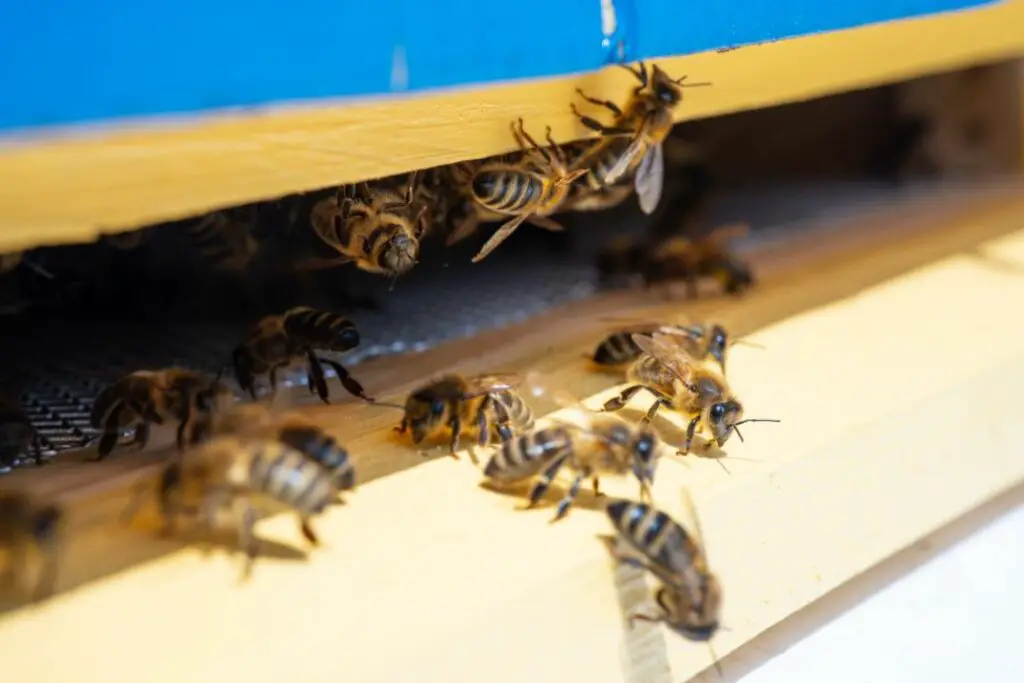
Swarming
Swarming is how honey bees reproduce on a larger scale. The current queen bee and up to half the workers will leave to form a new colony.
It usually happens when it starts to get too crowded within the hive.
And this mass exodus leads to a whole new set of tasks for queens and worker bees.
The queen starts to release pheromones that start a change at a colony level.
*Helpful reading – Make sure to check out ‘Why Do Bees Swarm?’ to get a better understanding of this amazing process.
Preparing to leave
Worker bees start to feed the queen less, so she’s light enough to fly while gorging themselves on honey for the journey ahead.
The glands that produce wax kick into overdrive in preparation to build a new hive.
Nursing bees build special larger cells known as queen cups to house the queen bee larvae.
It’s fed a diet of exclusively royal jelly to develop into a new queen to take the soon-to-be-empty throne.
Scouting
Now, scout bees take flight to try and find a suitable spot to call home.
When they think they’ve found the perfect location, they return to relay their findings.
They do this using a fascinating abdomen-shaking technique called a waggle dance.
The movements and their urgency communicate precisely where the bee has been and the ‘quality’ of its find.
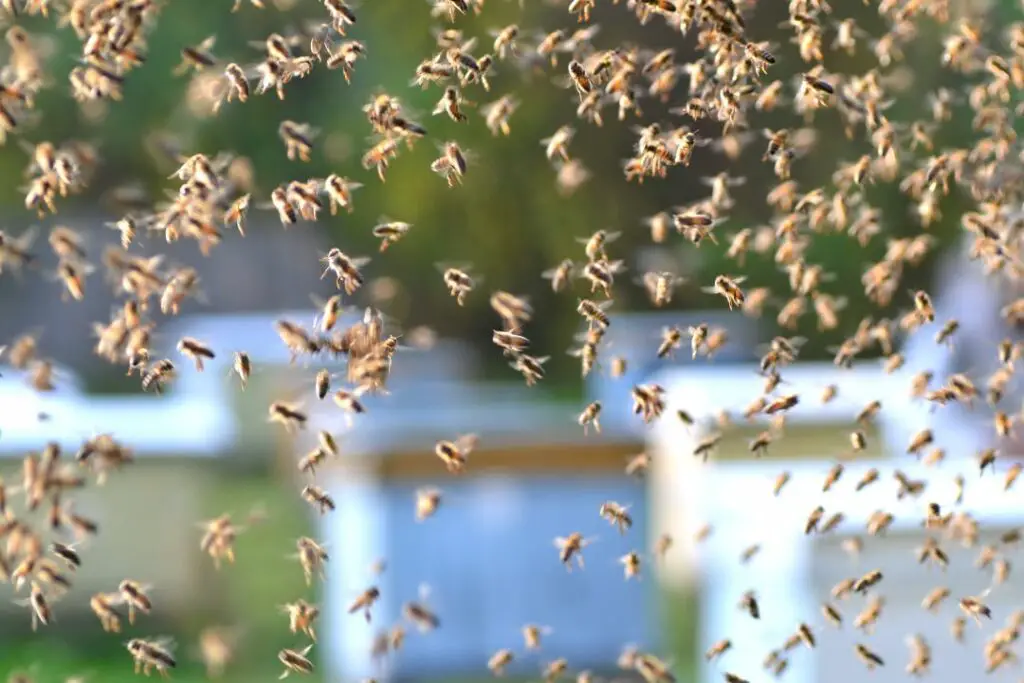
Finding a new home
To start the swarm, the old queen emits pheromones as a signal to start the swarm.
Workers surround the queen, forming a “queen ball” before leaving the hive en masse. The swarm may rest on a tree branch while scouts search for a new location.
Once found, the swarm moves in and starts building a new hive and comb to house eggs laid by the queen.
Domestication
Humans and bees have always had a long-standing relationship, particularly with the ever-tireless worker bees.
It didn’t take our ancient ancestors long to prove that bee nests contained a calorie-rich honey supply that tasted genuinely delicious.
But it wasn’t till approximately 10,000 years ago we started to try to keep bees as we know it today.
Now, beekeepers have a well-oiled relationship with bees, only taking what’s required and ensuring they’re well looked after throughout the winter.
Workers keep the hive stacked with an excess of honey, and beekeepers provide artificial feed through the colder season.
In Conclusion
Now, we’ve seen the journey from worker larvae to full-blown foragers tasked to collect and make honey for the hive.
Worker bees are the backbone of honey bee populations, tirelessly caring for the queen and the rest of the hive’s inhabitants.
As individual bees, they may not be much, but as an organised colony, they are some of the most successful insects on our planet today.
Looking for some more reading? We’ve got you covered with a question you’ve been dying to know, do bees poop?

